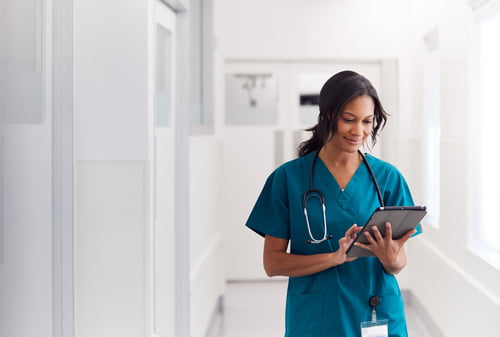
By: Debbie Boone, BS, CVPM – Originally published on Weave.
Every business I encounter is running on new protocols. Covid has increased cleaning, changed workflows, added time to almost every service offered, and made us all grumpy in the process. What can we do to gain some time back in our days?
In a recent presentation at the AVMA Veterinary Economic Summit, information was shared about pet ownership during Covid -19 by John Volk of Brakke Consulting, along with practice revenue and practice efficiency data. To my surprise, 19% of pet owning households did get a new pet but most got them in January and February prior to the major Covid outbreak. We all know from practice that many families choose to euthanize their pets over the holidays when all are gathered to say goodbye. These homes find a new pet in a few weeks after the holidays as this data confirms. Reports of empty shelters seem to be a regional issue as the pipeline of puppy transports from Southern states to the North was limited due to Covid restrictions. Pet food sales have not increased! This was a very surprising data point to me. So, what happened to increase the demand on veterinary care?
During the beginning of the pandemic many practices either could not open or restricted care to only urgent cases. This created a backlog of routine services. The government pushed out individual stimulus checks and added $600 to the unemployment checks laid off workers received, often giving them means to perform care that would have been delayed or declined.
On top of this, 56% of practices who did open went to curbside care which slowed them down as much as 50%.
The 30-minute appointment was stretched to one hour, further limiting availability and once again increasing wait times for appointments for routine care. Still, surveys show our clients want to return to the exam room with 89% of them satisfied when they were allowed into the clinic to interact with doctor and team, compared to only 63% who used drop off care.
Phones are ringing off the hook with overstretched CSRs trying to manage the demand of appointment requests along with the lengthy explanation of exactly how a curbside visit is carried out…on almost every call.
Now we are asking clients to:
- call when they arrive
- receive calls from the vet when an exam is finished
- approve an estimate over the phone or car side
- and then make payment by having their credit card swiped after a team member runs it in and out of the building. Whew!
Technology can help create better phone efficiencies.
First, we need to utilize text messages. Much of the time-consuming back and forth can be streamlined by texting rather than calling. Not only can we text during the visit, but within some software, apps, or phone systems we can link to online checklists and forms and send them out pre-visit to be completed. I know that every visit to my doctor’s office begins with a routine checklist for potential health risks or symptoms – why not do this for pets?
The next list to push out is the instruction list for curbside or your modified protocols. I have mentioned in other blogs and articles that remembering all the steps to curbside being shared by the CSRs with the clients is often lost in a fuzzy blur. Instead email or text a checklist (here is a free template) prior to the appointment so clients can be properly prepared for the visit.
With phones so overwhelmed, having a missed call feature can be a blessing. When people are searching for a veterinarian online they have many options. They will look at location, reviews and perhaps take a personal referral from a friend or family to start their search. However, when they reach out and get either a busy signal or no answer they quickly hop to the next practice in the queue. This is a missed opportunity to gain a client. I believe it is highly impressive when a practice quickly phones back that missed call and saves the prospect. This is one of the many features I love about #Weave phones.
Some practices have taken advantage of phone apps like iPhone Facetime or Samsung Video calls to perform the exam with the client watching. Zoom is another platform that can remove calls from the phone lines and move them online. When doctors perform the exam while the client is watching and listening, the need to first perform the exam and then call the client to report the finding is eliminated. The value of the work is also greater when a client sees it performed. As mentioned above, client satisfaction increases when they are allowed to come in with their pet. With Covid cases rising, having a video presence is the next best thing while still keeping all safe.
The last inefficiency is collecting payment. Some software systems like EzyVet will securely store client credit cards and all we have to do is ask permission to use it for our services. That speeds up workflow in normal times and really helps with curbside. Alternatives like using Weave to collect payment over secure text is an additional time-saver.
The message is this:
Covid is going to be in our lives for several more months.
It is smart business to look for ways we can streamline the curbside process. When we finally get out of this pandemic, I think we will continue to utilize and appreciate all the tools we put in play to enable us to work smarter, better, and faster.
As always, if you need help with your business please reach out www.dboone2managevets.com
